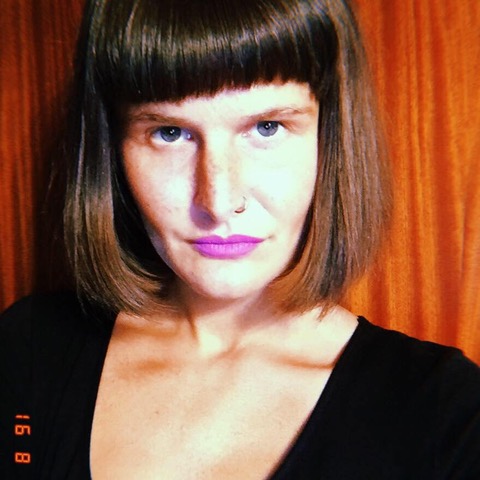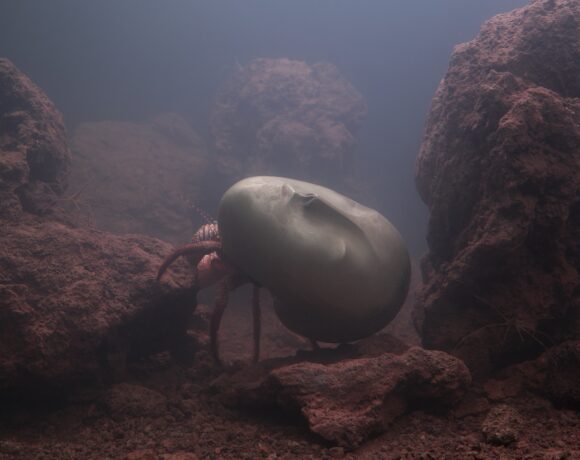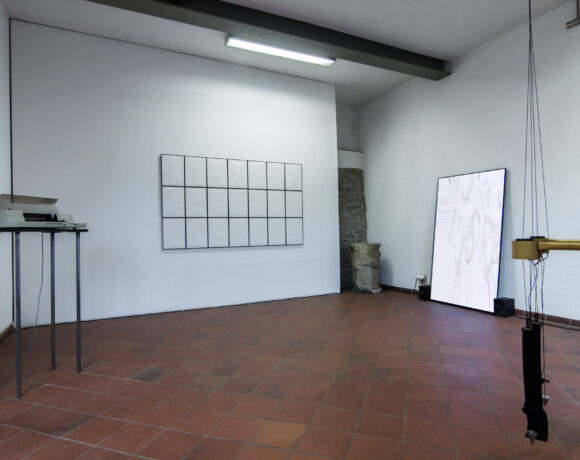This Friday at 7:00 pm #MEMEPROPAGANDA will come to an end with a special online event: to celebrate the closing of the exhibition, we’ll come together in a collective drawing session organized in cooperation with superinternet.space and greencube.gallery. The load capacity of the site is limited, but you can access the secret online location by asking for an invitation here.
Clusterduck is an interdisciplinary collective working at the crossroads of research, design and filmmaking, focusing on the processes and actors behind the creation of Internet related content. What are your models?
Quoting every single influence and reference that marked this first year of collaboration is practically impossible, maybe because we consider our practice as ever-shifting. It varies on the elusive dynamics of the subcultures we ourselves are part of. Maybe it’s right to say that our references are our network, the precious people we come in contact to and whom we collaborate, on a specter that goes from the deepest shitposter to pure academia. Lately we are following intensively the work of The Philosopher’s Meme, the publications of Geert Lovink on memetics and social netwrok, (you can find an extract in the exhibitive space of #MEMEPROPAGANDA) as much as the big heterogeneous galaxy of collectives, artists, events, researchers and curators sensitive to the digital: the Berlin Transmediale, DIS-Collective from New York and Metahaven from Holland to name a few. During this year we found very useful the interviews to Morehshin Allhyari and Daniel Rourke, that in their 3D Additivist Cookbook teach how is possible to gather a vast theme like additivism through the drafting of a collective work. For what concerns Italy we can mention the group formed around the mailing-list AHA, founded by Tatiana Bazzichelli with the significant participation of Antonio Caronia, or the experience of Art is Open Source by Salvatore Iaconesi and Oriana Persico. We are leaving many people outside but that’s the point, we don’t have simple references but a network in ongoing expansion.
#MEMEPROPAGANDA is an IRL/URL exhibition project, curated by Clusterduck collective and hosted by Greencube.gallery, taking place from the 8th of May to the 30th of June. The show represents a reflection on the growing role of memes in digital society, critically examining their wide reaching impact on contemporary aesthetics, politics and academia. Can you explain us the project’s phases?
The exhibition is structured in various phases. In the first one, six artists, comic artist and meme lords worked to create a set of propagandistic posters, that involved figures, languages and codes belonging to the memetic sphere. These posters were then spreaded through our network in selected localities around the globe, online and offline. The posters were intended to invite the public to visit the exhibition, besides being a vessel and expression of a message: memes are a powerful language, sometimes subtle, which can attract the “wide” public and innescate actual political campaigns.
The second phase of the exhibition, currently happening, has place online and is marked by interaction and participation. It is an homage to the environment in which memes and the first memetic creatures were born: imageboards. Thanks to opensource software Tinyboard + vichan, developed by savetheinternet and vichan-devel, wh had the chance to install on our servers an imageboard that’s virtually identical to 4chan, and from there, to create an archive. Here the users we’ll be free to partecipate to one or more draw-threads, created to experiment and give life to new memetic creatures.
The interactions generated by the users on the board will be accurately documented and archived, while some of the new creature originated by the participant public will become an integral part of the exhibition.
The exhibition will end on the 30th of June with an online celebration consisting of a collective drawing event: a party to old and new memetic rebirths, that will have place on the multidrawing 360° platform superinternet.space room, developed by Pietro Parisi.
Can you define “meme” to people do not know it? How did memes become so relevant in the political discourse?
A “meme” was meant to be, in the original intention of the term’s inventor, the evolutionary biologist Richard Dawkins, the social equivalent of what a “gene” is in biology: the minimal unit of transmission of cultural information, symbols, ideas and values. The truth is that, when we talk about memes, practically no one uses it in that sense, and probably the term would have become a misguided incursion of an eminent scientist in a field that was not his. But then came the internet: without discussing the complex disputes over the origin and the genealogy of memes, we can say that the term “internet meme” became the definition of online content of visual nature, characterized by the absence of authorship, by easy reproducibility and by an openness to reinterpretation and manipulation. In other words, usually memes don’t have a single author but are the product of incessant and continuous remixes by the online community. That’s why many memetic researchers (the emergent discipline dedicated to the study of memes) rather that focus on single memes, prefer to study formats, meaning the “frames” from which single memes are created.
Rather than as single images, memes are to be thinked of as a incessante creative process, generated by complex networks of online interactions. It’s important therefore to evitate the common misunderstanding that sees memes as “funny and viral pictures from the internet”. As much as memes have a predominantly a strongly humorous content, it’s always at least a particular humour, filled with cryptic and surreal references, hardly accessible to the “uninitiated”. And as much many memes have become viral at one point of their existence, virality is not a essential precondition to classificate a meme as such.
As the favorite language by online subcultures, memes have soon become a particular role in internet communication. In a way, the are effect and vector of a general acceleration caused by the process of digitization , process that, with the advent of social networks and the diffusion of smartphone, is in a ongoing state or radicalization. To answer to second part of the question: the spliest answer would be that meme became a political element by a series of careless choices by Hillary Clinton’s electoral team, that gave an unexpected stage to the more radical part of Trump’s online supporters (the well-known “Alt-Right”). Many of these, for better or worse, were and are some early-contributing memerz, that bringed memes and their hero in the spotlight. A more complex answer would need an excursus in two decades of internet culture and in the recent ideological fragmentation through a myriad of platforms.
In that sense, in contrast with the dominant narrative that wants 4chan as the ultimate cradle of memetic culture, we must remember that there’s a broader landscape prior to 4chan and reddit (a famous example would be Tekno Viking and its many reinterpretations) that just now are become research subject.
This fragmentation process can be seen as the expression of an ongoing cultural “war” that concerns all of us, which battles are being fight in many sceneries all around the globe. Internet, or the many “internets” around the world, is one of the key stages, maybe the most important one. And if the hypothesis that memes are a language that anthropologically characterizes the internet is at least remotely true, the mastery of this language could be the key to ensure us a future worth living in.
Simon Villaret, Jules Durand, David Renaissance man, Shay Ariely , Dottor Pira, Nicole Ruggero, Polyducks – Special guest: Pietro Parisi. These are the artists of #MEMEPROPAGANDA. Can you explain us the selection criteria?
The decision of involving artist from very different environments answered a series of needs: in first place it is coherent to the the curatorial identity of Clusterduck, that wants to break the internet’s “filter bubbles”, meaning groups and cultures closed and entrenched on themselves; and to mirror the diversity of possible stylistic and cultural approaches that exist in the meme universe. Then there’s a inherently pragmatic reason: to have a selection of posters that could attract attention to a vast public, considering that they needed to work as “call to action” to participation to the board, it seemed useful to choose artists and works that could speak to publics from different cultural and geographical realities.
Nicole Ruggiero, for example, is a classic 3d artist: usually her creations are bodies in virtual environments, as an artist is strongly rooted in “internet culture”, but during her adolescence she drawn meme character in MS Paint; so it seemed interesting to involve her, to show the public something different than her better-known works.
Shay Ariely is an illustrator and tattoo artist: her characters caught our interest from the start, since we think they have a strong memetic potential, recalling, for example, the famous character “dolan duck”. The interesting thing about Shay is that she didn’t know about the meme character before #MEMEPROPAGANDA: it was really interesting to introduce her to this world, teaching her the genealogical tree of characters like Gondola and Pepe. The work she produced came up as particularly comunicative.
David III is what can be defined as a professional memer: his memes are very interesting for us from an artistic point of view, he use fonts (the classic IMPACT of old school memes) in a more modern sense, with strategical spacing that makes it lighter, often using only one color. David is very minimal and we think that’s a very strong point of his work, because it develops a recognizable style in an scene in which is really difficult to become recognizable.
Simon Villaret on the other hand, against a minimal style proposes a chaotic esthetic, full of png images, transients and “dank” fonts: apart of being an artist he is the admin of a secret facebook ground that groups an interesting community of artists and designer. His style for us is a perfect expression of how chaotic and messed up internet is right now.
Dottor Pira () is well estabilished comic artist, we strongly recommend to read his latest masterwork SUPER RELAX スーパー・リラックス ULTRA HD 1080. We have been following him from a long time and for us he represents a link between a certain nerd-ish underground Hip Hop italian culture and the actual internet:


 Quartostato, Gondola and the Fourth Estate
Quartostato, Gondola and the Fourth Estate
 Clusterduck, Pepeshow, Pepe Show or Pepe’s family tree
Clusterduck, Pepeshow, Pepe Show or Pepe’s family tree
 wojak Feelings at the beach or Wojaku 2019s family three
wojak Feelings at the beach or Wojaku 2019s family three
 Gondola and some earth Porn
Gondola and some earth Porn
 Poster #MEMEPROPAGANDA
Poster #MEMEPROPAGANDA
we are fascinated by the way in which his characters, although not memes, recall their aesthetic and spirit.
Jules Durand is our “diamond”, we collaborated with him during the Wrong Digital Biennale and we are currently working on a editorial project very important for us. The works by Jules are well-researched and precise, and, even though we asked to create only one poster, he produced 68 of them, inspired by the propaganda design of the french May ‘68 and integrating it with his deep meme knowledge. Jules is what you call a “meme connoisseur”.
For the online exhibition space of the Green Cube Gallery you have adopted also an interactive collaborative image board, like 4chan, the popular image board. Can you motivate this choice? And what kind of results do you expect?
One of the key point of our group work is the will to create independent datasets: little spaces, archives, chat, autonomously managed and made available to our network. A project with a similar matrix is the one we are conduction on Delicios , a link archive that borrows directly from our Telegram research groups via a bot, realized in collaboration with Pietro Parisi. The thing we are doing is, for us, no only a collective participation, by a collective operation presented as an exhibition. To approach memes like any other form of art, detect authors and selecting artworks to create a physical and conceptual frame in which exhibit them seemed not enough (if not impossible), that are at the same time language, and artistic-expressive form and an online subculture. We don’t have the pretension of obtaining “results”, ours practice is one, borrowing the methodological approach of anthropological field research, we like to define as observant participation (the thing we observed until now, for example, is that shifting from one platform to another is difficult; our network doesn’t come from 4chan, but facebook, reddit, discord, telegram, in the beginning it was from tumblr, lately even instagram).
One of the big arguments we are posing ourselves is how to contain right-wing deviations, how to counter insidious tactics like the one from Trump supporters in which they insert intentional typos in his and his entourage’s tweets, triggering hate from grammarnazis and bringing haters to share his tweets. Or, coming back to memes, how to fight troll’s traps supported by masses of twitter-bots and users hired to meme and tweet in support of Trump, or, in the case of italy, of Salvini. Unfortunately the recent italian elections offered a tragic validation of a meme that became notorious after Trump’s triumph: “The left can’t meme”. A bitter truth, that many leftist refuse to accept, is that trying to react with rationality, or worse, with morality, against an army of digital Alt-right trolls, is like to approach an raging horde of Spartak hooligans like it was an Habermas seminar. Not only the language and the subjects are inadequate to the situation, but the real nature of our enemy is not clear to the majority of the political actors and mainstream media, creating grotesque misunderstandings. A recent example is the apparition, at a campaign rally of Salvini, of a Kekistan flag, a mythical state created by some parts of Trump supporters. Without going in detail, we must know that, like many actions by the Alt-Right, symbols of Kekistan are the result of a complex mythopoetic dynamic, in which the boundaries between joke, ideology and propaganda are labile and difficult to define: a literal minefield for mainstream media, slave to simplification and spectacularized titles. So that’s how the Kekistan flag became, for Repubblica, “the flag of USA neonazis”. A double win for the italian Alt-Right: from one end they obtained free publicity from every major italian newspaper, from the other they got to laugh at “normies” (that how the insiders defines the uninitiated), at their moralism and at their hypocritical and superficial approach. Without being too optimist, we think that the collective answer to these reactionary drifts could be, between other things, the elaboration of a new memetic language to unmask these mechanism and to fight troll on their same ground; trying to find maybe the pleasure of laughing all together, re-creating the common perspective of solidarity and participation through memes.
What do you think about social network for the artistic practice?
The artistic field is surely undergoing that sort of deconstruction and re-configuration of historic structures that startuppers and journalists loved to reassume with the term “disruption”: social networks made possible a direct dialogue between artist and public, and in general we can see how the role of the traditional “gatekeepers” of the art-world is, at the moment, the object of a strong redefinition. We’re not so naive to imagine a bright future, in which the strong grip of the big players on the white cube will be weakened by the insurrection of digital content creators: rather than, as in other field, we’re assisting to the erosion of the ancient powers and the emersion of new hierarchies.
Other than this, as direct witness of a good chunk of the european debate that arose between 2007 and 2010 in relation to the artistic practice on social networks and the emergence of Web 2.0, we can say that, in our experience, every attempt to normalize, describe and define the limits of the aforementioned form of expression is destined to create in a few years nothing more than a few laughs.
This is because is in the media’s own nature to not being never the same as it is, and so the texts and productions of artist that a decade ago have invested all their attention on a sensation like second life make us smile as much as Facebook likes when they were first born.
So, not to further ado in an analysis that would be destined to oblivion, we thought that the best way to answer would be to rely on the media itself: MEME

(1990) Graduated at DAMS in Bologna in Visual Arts with a thesis on the relationship and the paradoxes that exist between photography and fashion, from Cecil Beaton to Cindy Sherman, she specializes at the Academy of Fine Arts in Bologna in the two-year course in art teaching, communication and cultural mediation of the artistic heritage with a thesis on the historical-critical path of Francesca Alinovi, a postmodern critique. Since 2012 she has started to collaborate with exhibition spaces carrying out various activities: from setting up exhibitions to writing critical texts or press releases, to educational workshops for children, and social media manager. She has been collaborating since 2011 with various magazines: Vogue online, The Artship, Broken Fracture, Wall Street International Magazine, Forme Uniche Magazine.






NO COMMENT